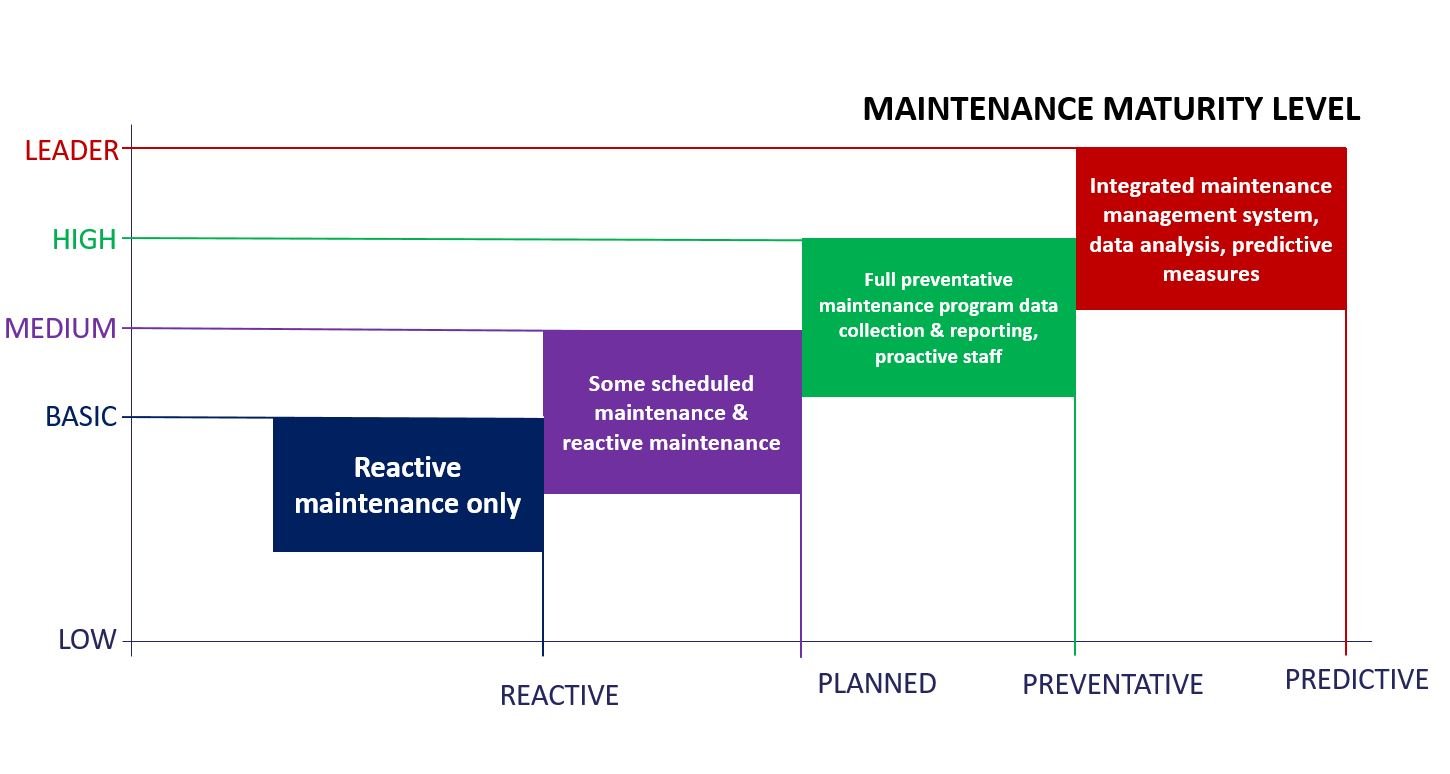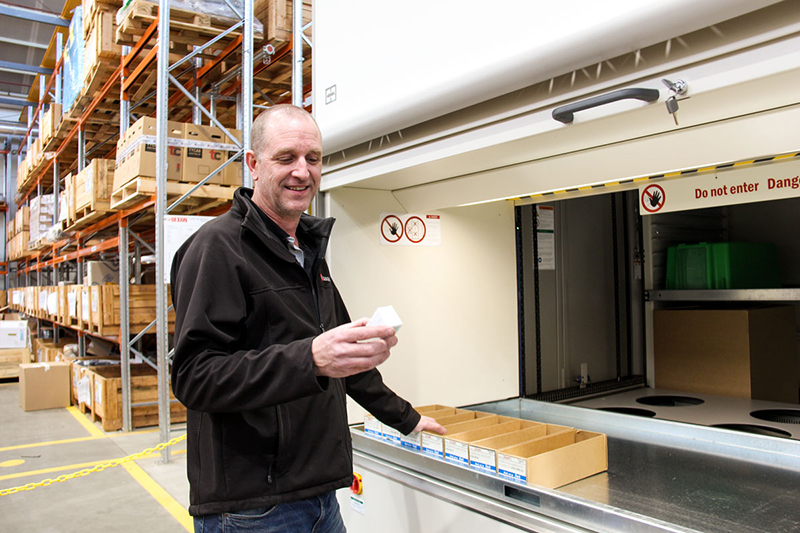Reduce unplanned downtime by avoiding these 5 maintenance mistakes
Peter Thompson, Published: April 12, 2018 - Updated: November 19, 2018 (8 min read)
There’s an overwhelming pile of advice out there on how industrial operators can reduce unplanned downtime and improve facility maintenance practices.
A lot of this has to do with smart analytics, and while we at SAGE are big fans of condition-based monitoring and predictive maintenance, we realise that many industrial operators and manufactures aren’t quite there yet.
Cost, time and level of maintenance maturity may be obstructing manufacturing managers in progressing their maintenance regimes from reactive to planned to preventive to predictive.

No matter which stage you’re at, though, you just might be unknowingly hindering your progress by making some fundamental maintenance mistakes that could potentially cost you millions in unplanned downtime.
Don’t be caught out. Reduce unplanned downtime by avoiding these 5 all-too-common maintenance mistakes.
Maintenance mistake #1: Disorganised, unaccountable stores
Why? Disorganised stores and spares management is a direct cause of extended unplanned downtime. When there is no accountability for who can access stores, it’s more likely spares will be taken and not returned or be tampered with, leaving the spare useless when you need them.
This is exactly what happened to a client of ours with a broken industrial PC. They had to go through four of their spares only to realise none of them worked, costing them weeks of downtime and millions of dollars in lost production.
“As SAGE Service technicians, we see many stores whose parts have missing power supplies. It’s likely someone has taken a power supply from a piece of equipment to recover from a breakdown and haven't replaced it or told anyone,” ex-Holden maintenance electrician and SAGE Service Technician Chris Kociolek explains. “Obviously this means a massive headache and potential downtime down the track.”
Turn it into a golden opportunity: There are several ways to optimise storerooms, starting with locking up your stores and ensuring equipment is tagged with the last person to use it to bring accountability into the system. Regularly check everything has a spare in stock and that that spare is in good working condition.
“It may be a big outlay, but it’s well worth the investment, compared to 2–3 weeks of downtime waiting for a spare to come in,” Kociolek says.
Maintenance mistake #2: Reactive run-to-failure maintenance
Why? Maintenance departments that spend the majority of time “fighting fires” instead of planning and doing preventative maintenance spend more maintenance budget overall and miss the opportunity to prevent failure from occurring in the first place.
This is partly because urgent breakdown maintenance tends to be a band-aid fix that does not identify the root cause of error. Naturally this results in repeat maintenance for problem equipment, more downtime, more frustration and more instances where external help is needed.
Turn it into a golden opportunity: Prioritise “not urgent but important” maintenance activities, such as scheduling in maintenance assessments and remedial works during planned downtime.
Read more tips from our NSW Service Manager here: 7 actionable steps to move towards preventative maintenance
Maintenance mistake #3: Underutilising operators’ knowledge
Why? Facilities that don’t use their operator’s front-line knowledge are missing out on thousands of dollars in maintenance opportunities.
Operators have the most intimate knowledge of the machines and their operating parameters; their early detection of odd machine behaviour can be fed into facility maintenance activities to prevent failure.
Turn it into a golden opportunity: Build a maintenance feedback system that helps production staff report issues easily. Make sure it’s close to their work space, nonverbal (so they don’t need to find or interrupt anyone), quick to do (e.g. a whiteboard, no forms to fill out etc.), and transparent. Make sure your maintainers can review and address this list – otherwise it will fall flat.
“Holden did this through their Total Productive Maintenance program,” Kociolek explains. “First, operators were responsible for their equipment and would perform basic cleaning and maintenance. Secondly, they’d write any issues they found on their ‘TPM’ whiteboard. Then the maintenance staff would check this daily and carry out the necessary repairs.
“It meant that there was a solid feedback loop and everyone could see their reported issues were making a difference.”
Maintenance mistake #4: Not recording historical data
Why? Baseline performance metrics, a reliable data collection method and work order records are vital for tracking maintenance performance and assisting technicians to diagnose cause of failure.
Computerised maintenance management information systems (CMMIS) are powerful tools that will do a lot of the heavy lifting, but spreadsheets can achieve similar results if you’re consistent.
Maintenance software can provide managers with trend data for overall asset performance and lifetime costs, while technicians can review asset log histories to see where scheduling can be improved, see if prevention activities are working, and find faults quicker.
Turn it into a golden opportunity: Keep track of historical maintenance using a CMMIS or Excel – as long as your technicians are logging tasks and information is being recorded to track improvements.
There are also a range of facility maintenance apps on the market. Nukon’s TilliT, for example, helps maintenance technicians manage their maintenance tasks and asset data, and provide alerts in real time. Meanwhile, SAGE is currently working on an app called SAGE Go, which will connect technicians with external support via a secure internet video feed, so fault-finding can happen without a specialist having to come to the site. Watch this space!
Maintenance mistake #5: Not involving your people in initiatives
Why? The biggest mistake managers can make is trying to implement new ideas without talking to their maintenance people first. The impact of this error is two-fold: technicians’ practical knowledge (that could improve the initiative) won’t be shared AND not getting them onside can lead to disengagement.
Managers with the best of intentions can be guilty of this, and it results in lost opportunities to improve the idea, and have a dedicated team make it succeed.
Turn it into a golden opportunity: To state the obvious, ask your maintenance technicians for their ideas, pain points and feedback. Get them onside for any new initiatives because the more invested staff are, the more they’ll look for problems to solve – saving the business in the long run.
Sometimes it’s the simple things that make the most difference
As we’ve found, involving people, recording data, having a planned approach and more organised stores, and making it easy for people to provide feedback about problems or improvements will ultimately reduce unplanned downtime and save the business considerable losses.
While preventative maintenance is essential, it doesn’t always mean things go according to plan. When a machine goes down, it can be difficult for operators to know what the issue is or who best to call. That’s why we developed a checklist to get them thinking about what may have caused the downtime and help them make the right choices to rectify it. Download it for free here.








